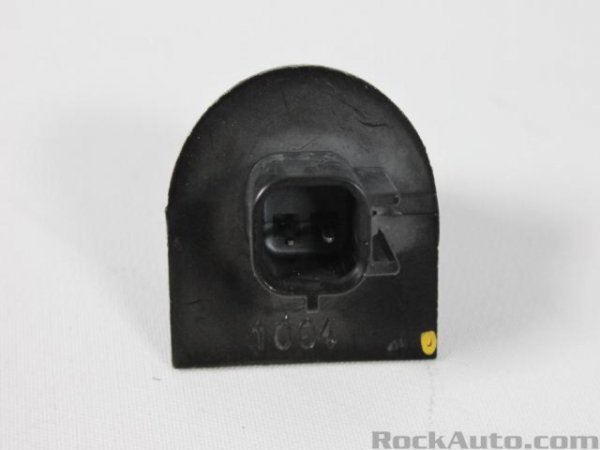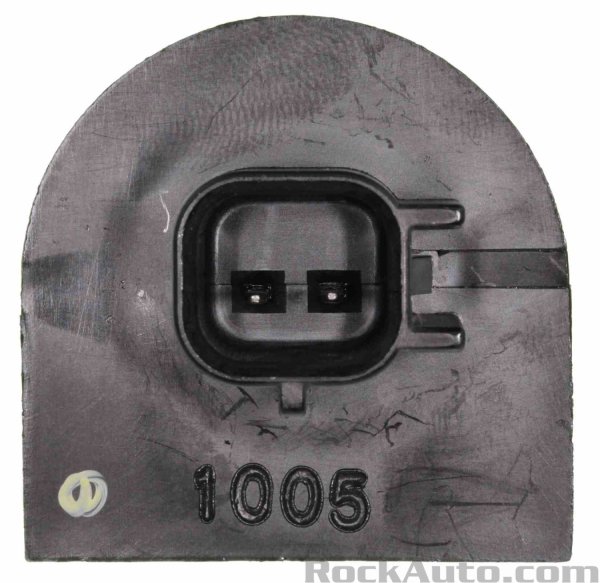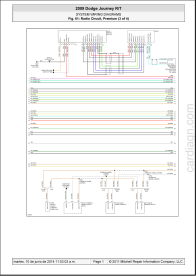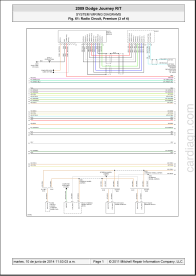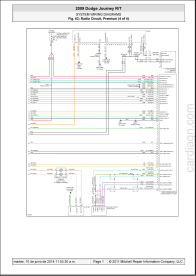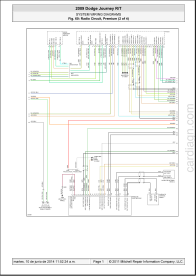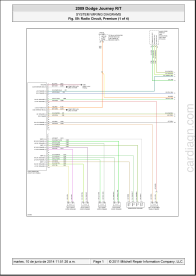-
Posts
1,830 -
Joined
-
Last visited
-
Days Won
186
Content Type
Profiles
Forums
Gallery
Everything posted by John/Horace
-
Here is a discussion of the AWD system from the service manual, which I found to be quite interesting and informative: The all-wheel-drive system requires no driver input or control. Under most driving conditions, it is passive and power is transmitted to the front wheels alone. The system functions to optimize traction and handling under the following conditions: Anticipates slip by responding to pedal position unlike all-wheel drive systems that rely on pumps or viscous fluids to transfer torque, the system requires no front-to-rear slippage for activation. This allows the system to transfer torque in response to accelerator pedal position. If the driver is asking for a lot of power, the system immediately starts clamping the Electronically Controlled Coupling (ECC), transferring a high percentage of power to the rear wheels. This avoids front wheel slippage, as power to propel the car is transmitted through all four tires. This mode of operation is called open-loop operation in that there is no feedback to affect the torque transfer. Modulates torque to optimize traction on slippery surfaces a second, closed loop, operating mode uses feedback from the wheel-speed sensors to determine the appropriate torque transfer. When the front wheels slip, the all-wheel-drive electronic control module tells the ECC to start clamping, sending power to the rear wheels. Attempting the same aggressive launch described above with the front wheels on ice and the rear wheels on dry pavement, the ECC sends even more torque to the rear wheels to minimize slippage and launch the vehicle. Both modes are always active and the maximum of the two is chosen. Power to the rear wheels is modulated during lost of traction while traveling at freeway speeds; for example, hydroplaning on a puddle of water, will send very little power to the rear wheels because the controller knows at those speeds a lot of power is not needed at the rear wheels. Prevents binding during low-speed turns a third condition, which is independent of the others, uses the ESP steering angle sensor to determine when the vehicle is turning in a tight circle. This condition causes the electronic control module to reduce torque to the rear wheels to prevent binding in the driveline. The electronic control module is always checking for this condition as well. Influences handling at moderate speeds. The AWD system is used to influence vehicle dynamics. Other manufacturers limit AWD to aiding traction or providing off-road capability. They concentrate on launching the vehicle or going off road at speeds up to about 25 mph (40 km/hr). Above that speed range, they use it to limit wheel slip for traction. Additional ECM calibration controls torque to the rear wheels for improved handling in the 25-65 mph (40-105 km/hr) range. In this speed range, the system utilizes torque to the rear wheels during cornering with the throttle open to make the car turn more easily – make the handling more neutral. This is more readily accomplished with an electronically controlled system, than with viscous-coupling or gerotor systems that require some degree of front-to-rear slip to transfer torque to the rear wheels. Above 53 mph (113 km/hr), the control strategy provides minimal torque to the rear wheels under normal driving conditions to aid fuel economy. Works with ESP and Traction Control the electronic control module also interfaces with the ESP and traction control systems. The interface allows the ESP system to use the ECC to help gain control of the vehicle. For this purpose, torque transmitted to the rear wheels by the ECC can be reduced. The AWD system is not traction control. It only works on situations where front-torear traction varies, for instance, front wheels on ice, rear wheels on dry pavement or climbing steep grades. AWD does not aid side-to-side traction. ESP does that through brake intervention.
-
No center diff on Journey, rear diff, front ptu and front transaxle built into automatic transmission like on most front wheel drive cars. Viscous coupling is bolted on front of rear diff, not on center diff like Jeep’s etc. It actually works pretty good in deep snow and icy roads. Need to keep an eye out for leaks on awd components on all vehicles, very expensive to run something dry and blow it up for rebuild/replacement. Turning off traction control is the first step if stuck with awd, most people seem to forget that. Owners manual has some specific details on how the awd is set up.
-
Is it a new battery in the car now. Low voltage can cause weird electrical glitzes to turn up. If you read through all the posts it’s seems removing driver door cover and resetting electrical plugs is worth trying. Latch mechanism which has electrical plug was changed in some cases and fixed problem. Trouble shooting needs to be done.
-
Make sure to use correct orange fluid, not regular ethylene glycol green stuff. Can’t mix them. There are aftermarket FCA Stellantis versions available, even crappy tire has one for $20 ish, although dealer is sometimes same price. Speedo shows 406000 kilometres, just broken in now. I answered other post on lightning symbol.
-

2011 AWD throttle body question
John/Horace replied to Pittiemama's topic in Electrical, Battery & Charging
What obd code are you getting, lightning symbol can be for gas pedal sensor other things as well. The gears on throttle stepper motor are plastic, so a wear item. Cleaning sometimes buys time but eventually you will need new/rebuilt part. Easy to change on 3.6, pain on the 2.4 with back of engine location. If it goes to limp biscuit mode, you can do a recalibration yourself so it it’s normal to drive for a bit longer. Google procedure, need to cycle ignition switch and gas pedal through a few steps. Oem part I believe is Hitachi , which is available aftermarket. Dealer oem part can be very pricy; I used rockauto new Hitachi part on family members 2.4. Worked great, plug and play. Free advice worth everything you pay for it. -
Welcome to the forum. With scooter on back, can’t really relocate sensors from bumper anywhere else, they only function for a short distance. Distance can’t be recalibrated to scooter dimension. But you can turn them off on radio screen in dash when scooter is in place.
-
Fuse on passenger side fuse box for blue tooth module, removing it temporarily is a good start. Most common parasitic drain issue on Journey.
-

Windshield washer Fluid low detection
John/Horace replied to wpginterceptor's topic in Exterior & Body
This is what he was cleaning, very clever fix actually. Probably have to drain and remove jug to change part. Cleaning seems easier, just don’t use wife’s tooth brush; too cold to sleep in garage this time of year.? -

Wiring diagram
John/Horace replied to Mike Robinson's topic in Audio, Infotainment Navigation, MyGig, UConnect, etc.
https://cardiagn.com/fig-59-radio-circuit-premium-09-journey-ewd/ Try your self. I’m old guy, iPad unfriendly site. Too lazy to use tiny android phone screen. -

Wiring diagram
John/Horace replied to Mike Robinson's topic in Audio, Infotainment Navigation, MyGig, UConnect, etc.
pics are pixil-ing out when enlarged, can’t seem to fix resolution issues. Mitchel on line mechanic login will have the info, need a one month subscription. -

Wiring diagram
John/Horace replied to Mike Robinson's topic in Audio, Infotainment Navigation, MyGig, UConnect, etc.
Please enable cookies. Error 1020 Ray ID: 6cb73a500cb7ecf6 • 2022-01-10 16:19:35 UTC Access denied What happened? This website is using a security service to protect itself from online attacks. Cloudflare Ray ID: 6cb73a500cb7ecf6 • Your IP: 104.158.4.56 • Performance & security by Cloudflare -

Wiring diagram
John/Horace replied to Mike Robinson's topic in Audio, Infotainment Navigation, MyGig, UConnect, etc.
-

Wiring diagram
John/Horace replied to Mike Robinson's topic in Audio, Infotainment Navigation, MyGig, UConnect, etc.
If you spend the time on the link, it’s in there. Security on site won’t allow diagram cut/paste easily. -
These guys are good for testing part compatibility I find, lots of pics. JPD JP3 isn’t mentioned on their list. Quite a few oem models shown. https://www.rockauto.com/en/catalog/dodge,2015,journey,3.6l+v6,3309784,body+&+lamp+assembly,outside+mirror+&+glass+assembly,1304 I used wrecker for our 2014 driver door mirror replacement, for approx $60. Just bought the cheapest manual fold, heated powered unit they had. Cover was wrong colour so I painted it with textured black spray. Couldn’t match body colour without paying $360 to dealer for a new one. Looks fine the way it is.
-

C0051-49 Steering Position Angle Sensor
John/Horace replied to mechanical-idiot's topic in Brake, Chassis & Suspension
Is an airbag light turned on. Usually clock spring has light for airbag or various airbag codes stored. Traction control light more likely wheel sensor, a wear item more or less. Free advice worth everything you pay for it.? -

Wiring diagram
John/Horace replied to Mike Robinson's topic in Audio, Infotainment Navigation, MyGig, UConnect, etc.
https://cardiagn.com/2009-15-journey-audio-radio-electrical-diagnostics/ Not great but some info. -

Interior Lights Come on When Braking
John/Horace replied to KV1's topic in Glass, Lighting, Mirrors, Sun Roofs & Wipers
What happened with the previous Bluetooth issue, was it a sick doa Bluetooth module? Low voltage from a dead battery sometimes creates weird problems. Any recent battery recharging events. Try unhooking main battery feed using one of the remote contacts under hood for 5 mins, not in fender well. Might reset something. Bad grounds can can create very weird issues like this. It’s newish at 2017 but corrosion is still possible, lots of grounds mounted near top of strut towers under hood. On Hyundai cars I had, the grounds in this location that had to be cleaned, paint removed to bare metal, thin film of dielectric grease and reassembled. Not fun with the present weather. -

Air synced and set to cool but hot coming out on passenger side
John/Horace replied to pzookey's topic in Climate Control
Although not related to this problem. Cabin filter change is important on these vehicles, about 2 years works for me. Lots of leaves and rural area plugs them up quicker. Havent changed an actuator on my wife’s Journey yet. Has acted up on two occasions in 4 years. Reset itself both times, I am going to grab a spare. Next time I probably won’t be lucky, it’s a 2014 model year. -
Justifying ev purchase involves a lot focus on the details. Service not as easy on the later stages of vehicle ownership, pretty much dealer only. If you flip cars every 5 years I think ev $ is an easier decision. But parking location, electrical set up etc all come into play. I’ve owned quite a few 4x4 and awd vehicles. The newer ones are lower maint now. Oil changes on diff’s every 5 yrs-ish and transfer case slightly sooner. The extra cost of option on purchase price seems to come back on better resale. Fuel consumption only slightly higher than two wheel drive. Not driving much makes it even more insignificant on annual cost. Good luck, enjoy new vehicle, happy new year.
-
Good luck with your new purchase. Lots of Journey owners moving on lately. It’s funny how people will over pay a dealer and get no service records. Private sale gives more information and no middle man commission to inflate price. Have never understood it. Did you go awd this time? Being in the nord makes it pretty useful some times. Quebec ev rebates make sense too if it matches your driving parameters.
-
Welcome to the site, sounds very frustrating. Which engine 2.4 or 3.6 and mileage would be helpful. Is your electric cooling fan coming on when the engine is over heating, seems like only part not changed. Easily checked by mechanic normally. My concern is the source of bubbles could be a head gasket problem. Expensive and hard to diagnose sometimes. There is a dye or test kit that can be used with glycol which will show if combustion gas is leaking into cooling system. Hope it’s not that, not a common problem. Big repair.
-
That’s tough, thanks for follow up. Compression test is best evaluation of an engine. Although if metal filings are every where you know it’s toast. LKQ engine is usually cheaper than rebuilding it. But there is some risk. Bad time of year for this kind of thing. Good luck.
-
Unfortunately the low voltage condition is still there, 10 volts won’t run a car normally. Try jump starting car, leave cables attatched for 5 mins before trying. Cycle on ignition with cables attached to clear the lightning bolt symbol first. Then try starting with cables still hooked up. Push button is finicky for good voltage feed. Sitting for a bit with new battery may have drained it, something not switched off. Need that new battery charged up. Bluetooth module is most common parasitic draw over night, pull fuse if you have to temporarily. Fuse box at kick panel on passenger side, lots of links here explaining which fuse to pull if needed.
-
Codes are usually cleared with ignition on and car not running. Was lightning symbol on when the car first died , or after the new parts were added ? What is the battery voltage with the ignition turned on ? No arcing incidents during battery/alternator change.
-
Most those codes are voltage related. No timing related codes so I doubt timing chain issues, mileage not crazy high either. Is the negative battery post temperature sensor plugged back in and not damaged, it can affect operation of car. Sometimes new batteries don’t have a decent charge, try running a charger on it for a few hours. Might be something simple, try the calibration procedure for throttle/accelerator pedal units. Lightning bolt is for a major electrical issue, it should clear itself with proper charged battery. ECU Accelerator Pedal Reset Procedure Note Timing is critical for this to work! 1. Turn the ignition switch to on. Dash gauges lit. Don t start the engine! 2. Wait 3 seconds. 3. Fully depress and release the accelerator pedal 5 times within 5 second. 4. Wait 7 to 10 seconds. 5. Fully depress the accelerator pedal for approximately 10 seconds. At this point the check engine light starts blinking quickly indicating Diagnostic Test Mode II (Self-diagnostic results) has started. 6. Release accelerator pedal and wait 5 to 10 seconds. 7. Fully depress the accelerator pedal for 10 seconds. At this point the check engine light should change to blinking slowly indicating “Erasing ECU Memory”. 8. Release the accelerator pedal and turn the ignition switch to off. 9. Restart the engine. The check engine light should be out. Note: If the check engine light doesn't blink as described in steps 5 & 7, then the ECU isn't reset. * If above didn't work, disconnect the battery negative and pump the brake to discharge the ECU capacitors. This method is almost foolproof as long as all ECU control parameters are within their normal ranges. Resetting The Throttle Body Calibration (this st



